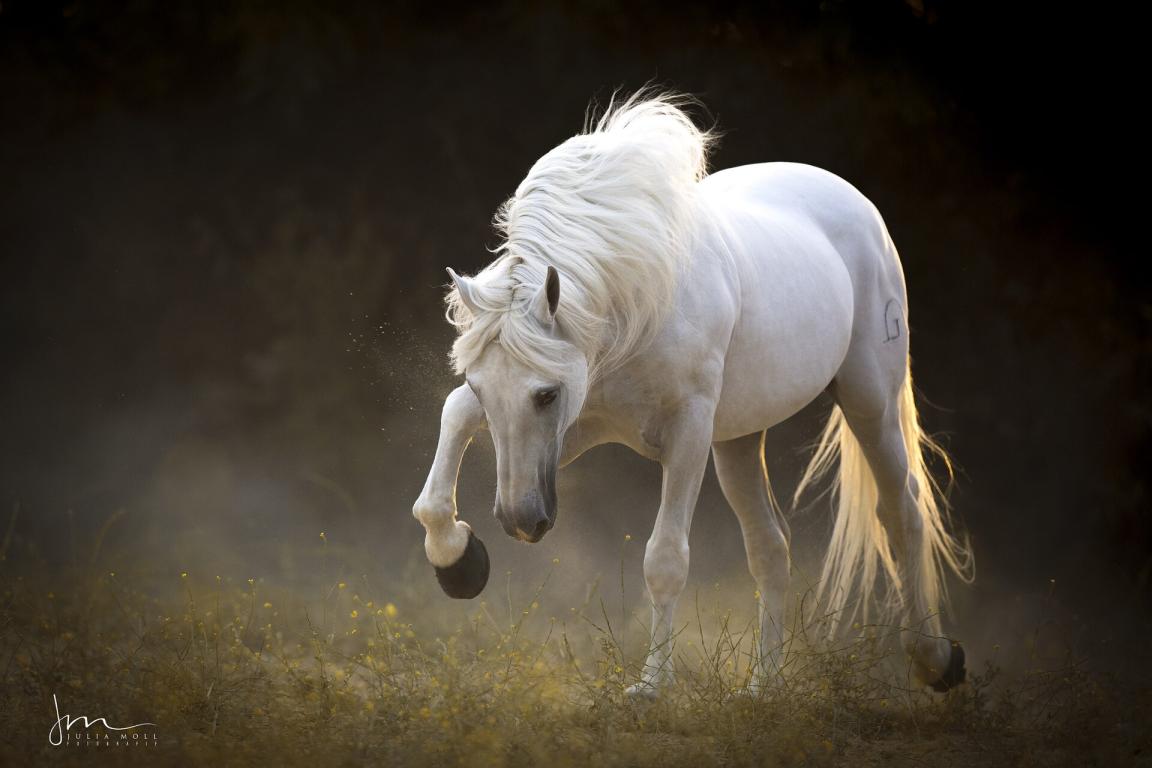
Continent: Europe
Country: Spain
Weight: 400 – 550 kg
Height: 155 – 165 cm
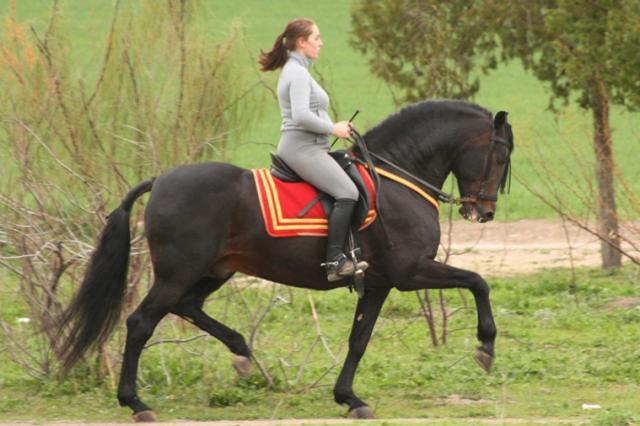
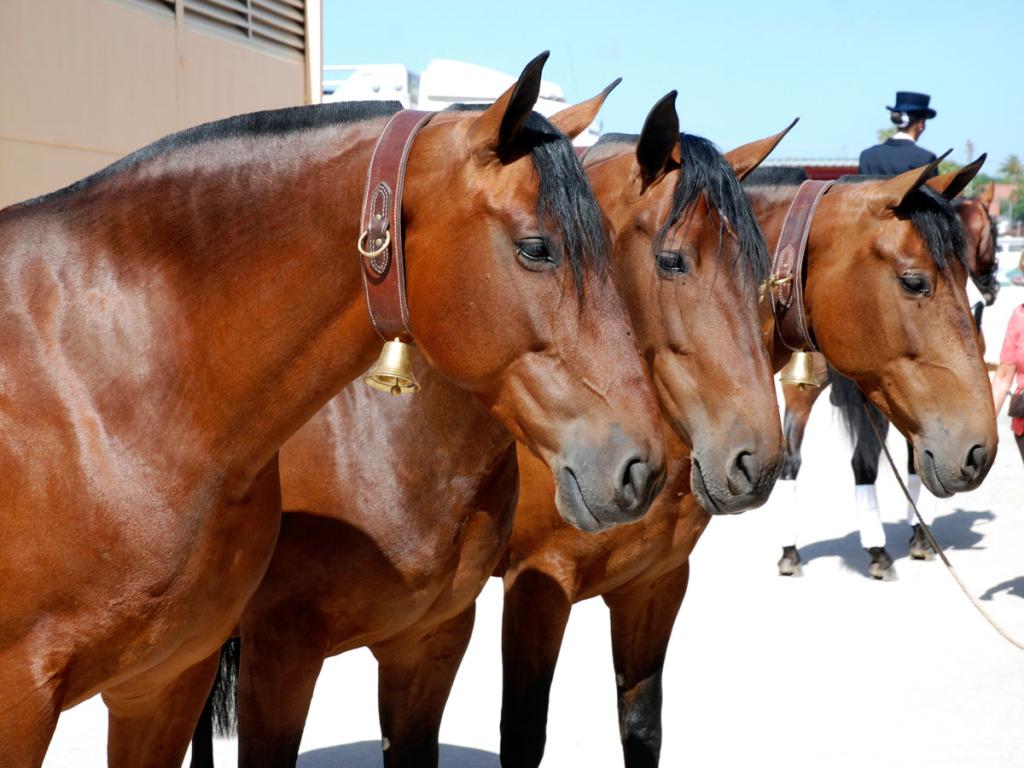
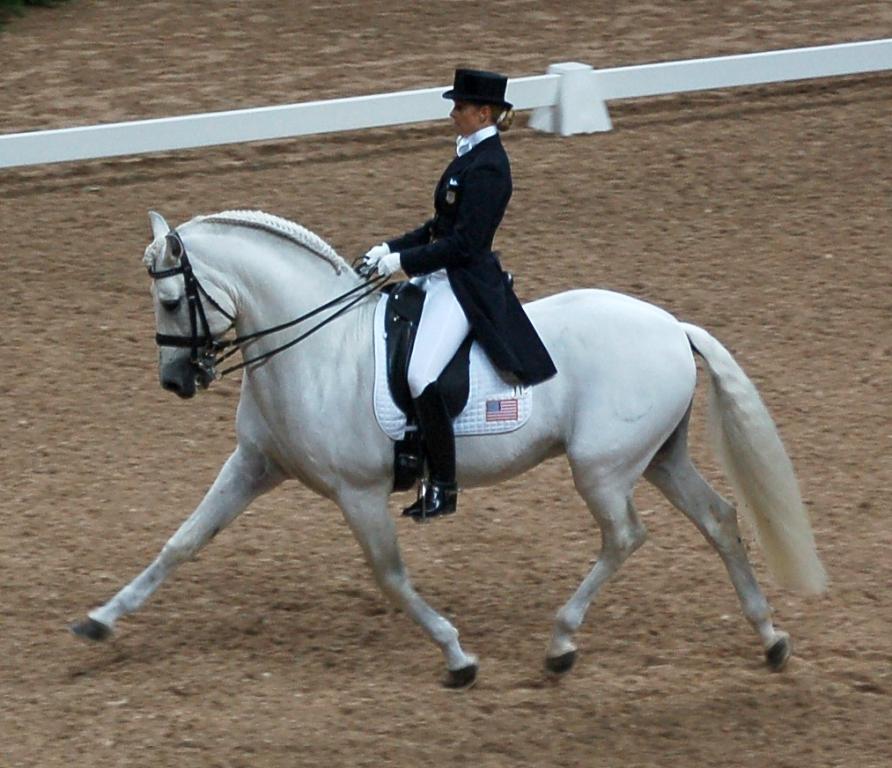
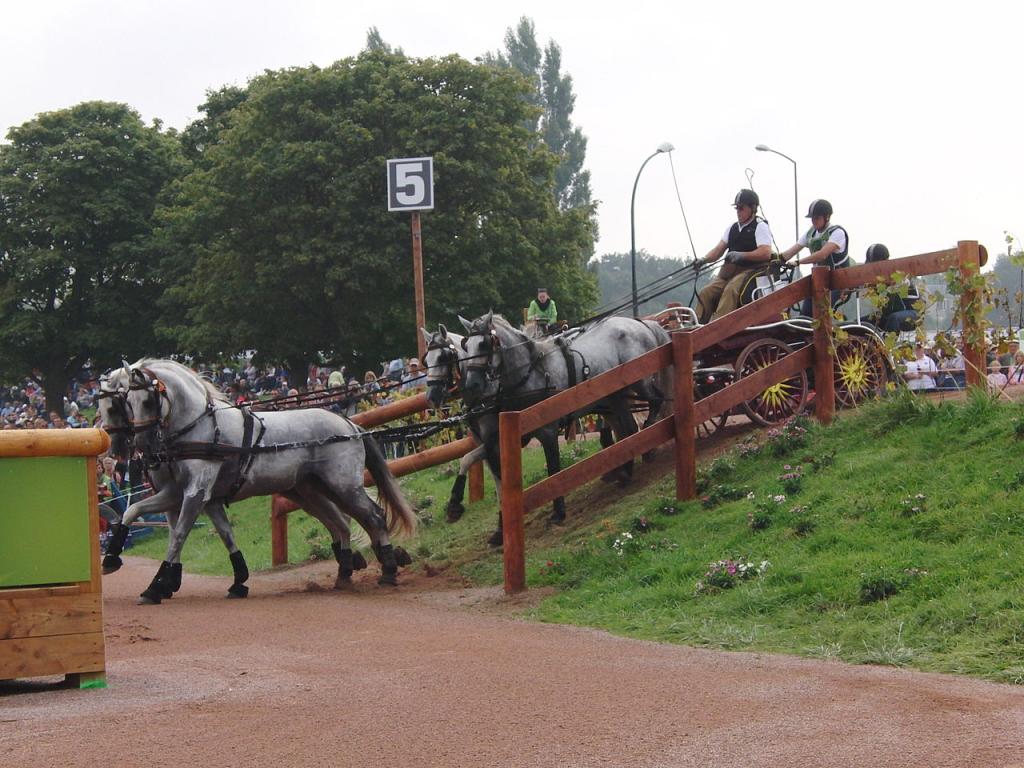
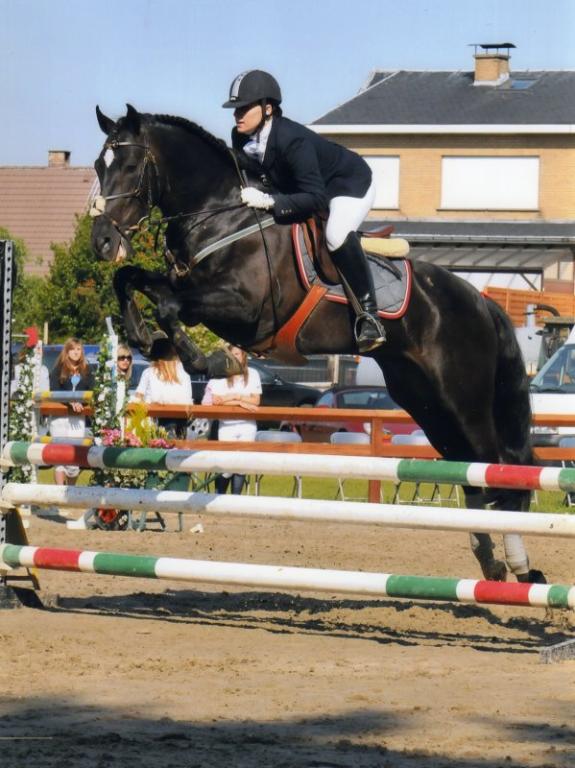
The Andalusian horse, or Pura Raza Española (PRE), has its roots in southern Spain, specifically in the region of Andalusia. The most emblematic historical breeding areas include Seville, Córdoba, and Jerez de la Frontera. This culturally rich region, a crossroads of civilizations, favored the crossbreeding of local Iberian horses with North African and Eastern breeds.
Ancient influences :
The origin of the PRE dates back to antiquity, beginning with native Iberian horses, renowned for their agility and endurance. These horses were later influenced by Barb and Arabian bloodlines, particularly during the seven centuries of Moorish presence on the Iberian Peninsula.
Breed consolidation :
The PRE began to take shape as a defined breed in the 15th century, thanks to the work of the Carthusian monks in Jerez and the Spanish crown's desire to develop a noble, powerful, and maneuverable horse for war and parade. Breeders selected horses that combined elegance, strength, and expressive movement, in line with the aristocratic and military ideals of the time.
Global diffusion and influence :
From the 16th century onward, the PRE was exported widely, especially through the Spanish conquistadors. It went on to influence many European breeds such as the Lipizzaner, Friesian, and Lusitano, as well as several American breeds like the Paso Peruano, Criollo, and even the Quarter Horse.
A cultural symbol :
Today, the Pura Raza Española is recognized as a living symbol of Andalusian identity and Spanish equestrian heritage. It embodies elegance, tradition, and the pride of a bloodline preserved through centuries of meticulous breeding.
Historical birthplace :
The Andalusia region, in southern Spain, is the undisputed cradle of the Pura Raza Española (PRE). The provinces of Seville, Cádiz (especially Jerez de la Frontera), and Córdoba have been home to the most prestigious breeding farms for centuries. It is in this region that the breed developed, particularly around royal studs and Carthusian monasteries.
National breeding network in Spain :
Today, PRE breeding has spread widely across the entire Spanish territory, with high-quality studs located in Extremadura, Castilla-La Mancha, Murcia, Valencia, and Catalonia. The breed is regulated at the national level by ANCCE, which oversees the studbook, morphological evaluations, and functional competitions.
International presence :
The Pura Raza Española is bred in over 60 countries. Some of the most active international regions include:
- United States (California, Texas, Florida)
- Germany
- France (Southwest, Provence, Brittany)
- Mexico
- Australia
- Netherlands
- United Kingdom
- Latin America (especially Colombia, Costa Rica, Chile)
Foreign breeders work in collaboration with ANCCE, and breeding stock must be approved within the official Spanish studbook framework.
Foundational Baroque Breed :
The Pura Raza Española (PRE), or Andalusian horse, is one of the true archetypes of the baroque horse. Its harmonious conformation, mental balance, and natural aptitude for collection make it a foundational breed in the history of equine breeding. It has served as a genetic base for many European bloodlines.
Strong international influence :
The Andalusian has played a major role in the creation or improvement of numerous breeds, including:
- the Lusitano (Portugal)
- the Lipizzan (Austria)
- the Friesian (Netherlands)
- the Kladruber (Czech Republic)
- the Paso Fino and other Latin American breeds
- and the Azteca (Mexico)
Its genetic legacy is widely recognized across Europe and the Americas.
Desirable hereditary traits :
The PRE is especially sought after in breeding programs for its reliable hereditary qualities, such as:
- a docile and balanced temperament
- naturally elevated gaits
- a compact and muscular conformation
- physical resilience and notable longevity
It is used to enhance horses bred for sport, performance, or working purposes.
Rigorous genetic selection :
The breed is managed under a strict selection program led by the ANCCE, based on morphological, functional, and behavioral evaluations. This genetic monitoring ensures controlled development of the breed, while faithfully preserving its original identity.
The Andalusian horse, or Pura Raza Española (PRE), has one of the richest and most influential histories in the equine world. Its lineage is ancient, noble, and deeply rooted in Spanish traditions.
Ancient Origins :
The PRE descends from pre-Roman Iberian horses, which inhabited the Iberian Peninsula for thousands of years.
Renowned for their agility and bravery, these horses were used by the Celts, Iberians, and Romans.
Arab-Berber Influence (8th–15th centuries) :
During the Muslim rule of Al-Andalus (711–1492), Iberian horses were crossed with Barb and Oriental (Arab-Persian) horses.
This gave rise to a refined, supple, and enduring type: the early Andalusian horse.
Golden Age of the Renaissance (15th–17th centuries) :
Under the Habsburg dynasty, Spain elevated the Andalusian horse to a symbol of power and royalty.
It became the horse of choice in European courts.
The Carthusian monks of Jerez de la Frontera (known for the "Cartujano" line) played a major role in refining the baroque type.
The PRE had a significant impact on the development of the Lipizzaner, Lusitano, Friesian, and other baroque breeds.
Decline and Marginalization (18th–19th centuries) :
Changes in military strategy (rise of light cavalry) and the onset of industrialization led to a decline in the breed’s prominence.
The PRE survived thanks to a handful of royal and monastic studs.
20th-Century Revival :
In 1912, the Spanish state established the official studbook for the PRE.
In 1972, the ANCCE was founded to organize and promote the breed.
From the 2000s onward, the PRE experienced a global resurgence, especially in equestrian sports and performance shows.
Today :
The Andalusian horse is recognized as a living cultural heritage of Spain, particularly Andalusia.
It combines tradition, beauty, intelligence, and functionality, making it a highly sought-after breed worldwide.
The Andalusian horse is known for its emotional balance, noble spirit, and high willingness to cooperate.
It stands out with a lively yet composed temperament, making it both pleasant to ride and easy to train.
- Intelligent: quickly absorbs new exercises and demonstrates excellent memory
- Sensitive: responds subtly to aids, making it a perfect partner for dressage and precision work
- Energetic but manageable: naturally forward-moving without being hot or reactive
- Willing: eager to please and fully engaged in its work, especially when handled with respect
Relationship with humans :
The PRE often develops a close and trusting bond with its rider. Its affectionate and curious nature makes it particularly suited for:
- natural horsemanship,
- groundwork,
- and disciplines that promote connection and lightness
Work behavior :
The Andalusian horse shows excellent concentration, ideal for:
- advanced dressage movements,
- collection, lateral work,
- and the elevated airs seen in baroque performance and classical shows
It is also resilient to stress, performing confidently both in the arena and outdoors.
Compatibility :
Thanks to its steady and predictable character, the PRE is suitable for a wide range of riders, including:
- leisure or performance riders,
- enthusiasts of classical or artistic riding,
- and intermediate dressage competitors
Beginners can also benefit from the PRE, provided they are properly supervised.
The Andalusian horse (Pura Raza Española – PRE) enjoys a promising future, supported by its historical prestige, functional qualities, and the growing commitment of the global equestrian community. Below are the main trends and perspectives.
Ongoing international growth :
The PRE is increasingly sought after outside of Spain, especially in:
- Western Europe (France, Germany, Italy)
- North and South America
- Australia
This expansion is backed by ANCCE, which is establishing international branches and modernizing studbook services (identification, genealogy, and conformation shows abroad).
Recognition in sport and leisure :
The Andalusian horse is gaining visibility in:
- Classical dressage, particularly at intermediate and amateur levels
- Equestrian shows, natural horsemanship, and groundwork
- Leisure riding for experienced riders, thanks to its gentle nature and comfort
Rigorous genetic selection :
ANCCE continues to develop its morpho-functional selection program, incorporating:
- Performance assessments
- Genetic testing to preserve diversity
- Indexes for sport aptitude
This ensures the breed is improved responsibly, without commercial drift, and maintains the baroque identity of the PRE.
Challenges to address :
- Preservation of traditional bloodlines in the face of excessive modernization
- Control of unrecognized crossbreeding, especially with non-PRE horses abroad
- Risk of cultural dilution if global breeding expands without strict oversight
The Andalusian horse combines living heritage and modern potential. Its future remains bright—provided it is guided and valued with care. With its nobility, versatility, and timeless appeal, the PRE stands as an exceptional breed with strong international promise.
The Andalusian horse is renowned for its robust constitution. It features a strong bone structure, well-conformed limbs, and excellent recovery capacity, even after intensive work.
This breed is generally less prone to metabolic disorders compared to high-performance sport horses.
Additional strengths include:
- Remarkable longevity, with many individuals remaining active well into their mid-20s and beyond
- Hard, resilient hooves, rarely affected by hoof problems when properly maintained
Health considerations and points of attention :
While the PRE is overall a healthy and hardy breed, a few sensitivities may require monitoring:
- Tendency to gain weight, especially in leisure-bred or low-activity individuals. A balanced diet and regular exercise are essential.
- Moderate risk of Equine Metabolic Syndrome (EMS) if overfed or kept too sedentary
- Side cartilage ossification (generally benign, but should be monitored if progressive)
- Sickle hocks (overly closed hock angle), sometimes observed in young horses from certain bloodlines
- Umbilical hernia: occasionally noted, usually mild and without serious consequences
Recommended prevention and care :
To maintain optimal health, it is advisable to:
- Ensure consistent physical activity, to support muscle tone and joint flexibility
- Schedule annual veterinary check-ups, including dental care and rational deworming
- Work with an experienced farrier, especially for horses in sport or performance
- When needed, consider osteopathic evaluations for postural or locomotor comfort
Natural four-beat gait, regular, calm, and well-rhythmed. The Andalusian horse walks with elegance, suppleness, and reach, often showing light flexion of the joints. A comfortable gait, ideal for groundwork and building rider confidence.
Diagonal two-beat gait with a moment of suspension. The PRE's trot is supple, fluid, and elevated, with strong impulsion from the hindquarters. Perfect for dressage movements, it remains comfortable thanks to the horse’s natural balance.
Three-beat gait with a moment of projection. The PRE’s canter is rhythmic, ground-covering, and rounded. It shows good engagement of the hindquarters and suits collected work, pirouettes, and flying lead changes.
A spectacular artificial gait where the horse lifts and extends one foreleg at a time in a marching rhythm. Widely used in performances, it requires training, control, and great suppleness. It highlights the PRE's natural pride and elegance.
An advanced dressage gait, similar to trotting in place, with pronounced leg elevation, rhythmic cadence, and deep hindquarter engagement. Piaffe demands impulsion, collection, and fine rider connection. The PRE excels naturally in this movement.
Highly collected and suspended diagonal gait, between collected trot and piaffe. Each step is lifted, suspended, and performed with great suppleness and deep hindquarter engagement. The PRE shines here thanks to its natural balance and lightness.
High-school movement in which the horse raises itself on the hind legs, maintaining an angle of about 35°, without fully rearing. Demonstrates strength, balance, and submission. A signature baroque figure well-suited to the muscular build of the PRE.
A spectacular movement where the horse lifts onto the hind legs and performs one or more forward jumps while remaining upright. Rare and demanding, it is practiced by highly trained PREs in traditional Spanish riding schools.
High-school movement where the horse jumps into the air and kicks out with the hind legs. Mostly seen in Lipizzaners, but some well-trained PREs can perform it. Very technical, requiring strength and coordination.
Born on 01/01/1998
Finalist at the 2010 World Equestrian Games in Lexington (USA), he impressed the public with his expressive freestyle, combining precision and nobility. He became the emblem of the modern PRE in dressage.
- Rider: Juan Manuel Muñoz Díaz

Born on 01/01/1987
First PRE ever selected for the Olympic Games (Atlanta 1996), marking a historic breakthrough in international dressage for a baroque-type horse.
- Rider: Ignacio Rambla
Born on 01/01/1991
Spanish Dressage Champion and participant at the 2002 World Equestrian Games, Invasor II was a leading reference for the PRE in the 2000s, showing consistency, impulsion, and elegance.
- Rider: Rafael Soto
Born on 01/01/1998
Multiple-time morphology and functionality champion in Spain. Represents the ideal PRE according to ANCCE standards: baroque type, expression, and movement. Frequently used as a reference sire.
Born on 01/01/1989
Team silver medalist at the 2000 Sydney Olympics, another milestone for the breed at the Olympic level. He embodies the PRE's competitiveness against traditional dressage breeds.
- Rider: Ignacio Rambla
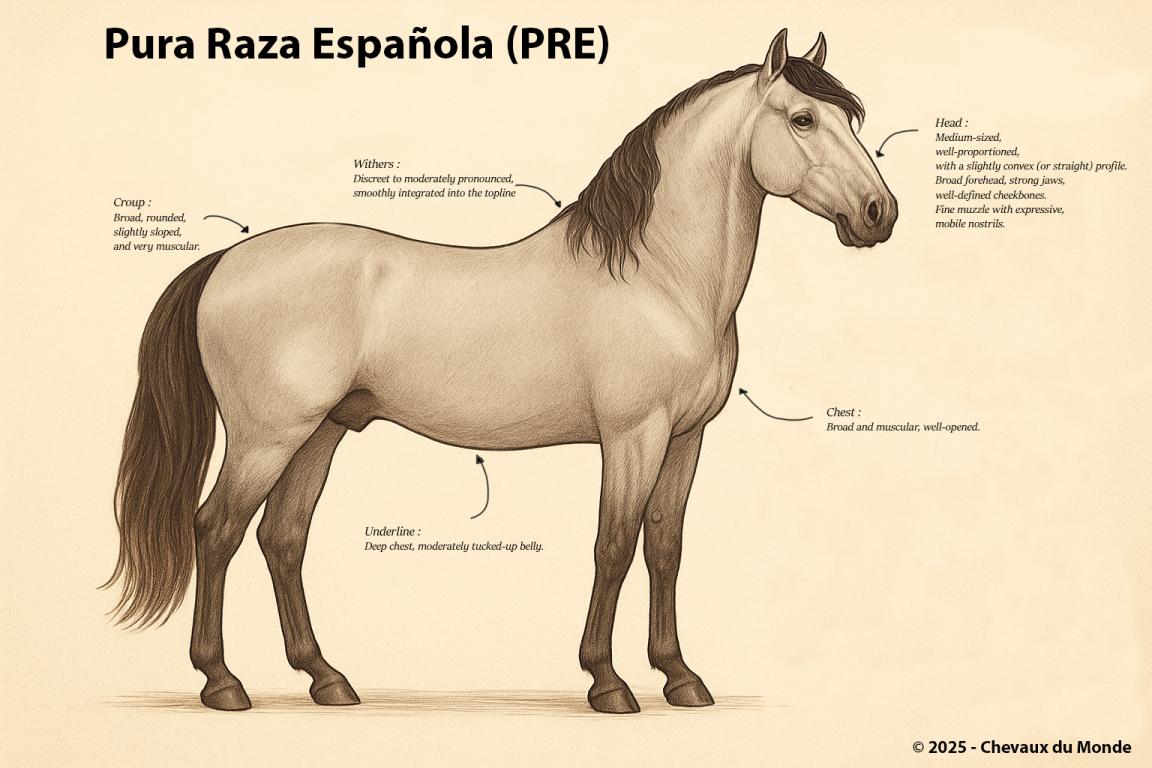
Pura Raza Española (PRE) - Andalusian horse - Breed Standard Illustration

Spain, which occupies most of the Iberian Peninsula, is the birthplace of a truly unique breed: the Pura Raza Española (PRE). This horse is a perfect balance of beauty and elegance, making it one of the most beloved breeds in the world. The Purebred Spanish Horse is a reflection of the past and present, always pointing to a future of endless possibilities.